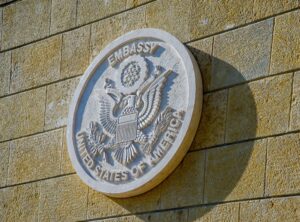With the Clean Air (Human Rights) Bill currently making its way through parliament, Peter Dyment from Camfil, and advisor to Clean Air London, discusses why clean air should be law and the importance of ensuring inside spaces — areas we can control — are ‘safe havens’ from external and internal pollutants.
Every week there is a new story about air quality and its dangers, recently that children are being subjected to levels of toxic air on the school run and even once inside their classroom. The findings from academics at Queen Mary Hospital in London reveal that young children are absorbing a disproportionate amount of tiny black carbon particles during the school day with potentially devastating health consequences.
Peter Dyment, CamfilThese findings are just some of the many coming forward that demonstrate the huge toll air pollution has on the nation’s health. It’s not just asthma and heart problems; Kings College Professor, Frank Kelly has recently calculated a strong link between city air pollution and dementia – the suggested figure is said to be 60,000 cases in the UK.
So what is being done about this major public health crisis? At the moment, the Clean Air Bill is making its way through parliament, a significant piece of draft legislation that will affect environmental policy, building management and importantly, people’s health. The Bill comes at a crucial time, following the European Commission referring the UK to the European Court of Justice (ECJ) at the start of the year for its failure to comply with limit values for nitrogen dioxide. Our government was also given its first written warning for disregarding vehicle type approval rules.
Clean Air Bill
The Clean Air Bill was introduced to the House of Lords by Green Party Peer, Baroness Jenny Jones, on 5 July this year. Drafted in collaboration with Clean Air London, the Bill aims to enshrine the right to breathe clean air into UK law. Covering air pollution both out and indoors, if passed, the Bill will enable people and communities to defend their right to clean air in the courts, forcing councils, corporations and government bodies to take air quality seriously. New technical standards enable effective selection of air cleaning solutions.
As a starting point, we should all be looking to the air inside our buildings; something that we can control straight away. With the majority of us spending up to 90% of our time indoors, IAQ’s effect on our health is significant, with pollutants in some environments up to five times more concentrated indoors than out. Improving the air outside will take a long time, it means changing our modes of transport and the way we heat and power our homes. Making our buildings into “safe havens”, however, is a quick, effective and cost-efficient way to bring significant health protection to those living and working in our cities.
Air filtration is critical in this process, with standard ISO 16890 using particle size as a measure of efficiency. The very smallest particles (PM1) are the ones that do the most harm, and by helping specifiers, installers and facilities managers to understand the effectiveness of the filters in these terms, they can make choices that are better for people’s health and wellbeing. Removing particles also positively effects the performance of associated HVAC equipment, therefore saving energy.
The time of ‘what the eye doesn’t see’ is over. The very smallest and most invisible pollutants are causing untold damage to our bodies and minds. It’s time to take air quality seriously and make those responsible for our buildings responsible for our health too.












